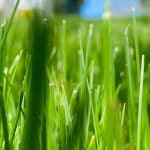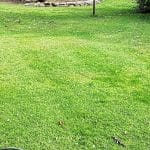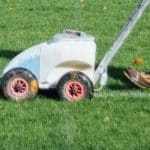Table of Contents
So, you’ve made a hefty investment and got yourself a sweet plot of turf. You’ve brushed off the shackles of city life and embraced the joys of homeownership, mowing, watering, and enjoying outdoor BBQs on Sunday. However, amidst the fresh smell of cut grass and the chirp of Sunday morning cricket, you realized your little green paradise was turning into a crumbly disaster. But fear not! Your green oasis can look lush again. The answer lies in choosing between an age-old lawn care debate: dethatcher or aerator. But before we get you tangled up in that knotty decision, let’s lay out the groundwork, shall we?
Dethatching and aeration may sound like the same old technical jargon, but they’re your yard’s lifeline. Both processes target different issues. Think about it like this: it’s like going for a jog and pumping iron – different activities for different results, but both are vital for your overall health. Same with your lawn. Dethatching revives turf suffering from a buildup of dead plant material, while aeration combats soil compaction, allowing water and nutrients to flow easily to the root zone. To put it simply, they’re like the Lawn Avengers saving your grass from all sorts of calamities!
Understanding the Basics: Dethatching and Aeration
Dethatching and aeration are two crucial commandments of lawn care. While lawn soil may appear steady and quiet, underneath, there’s a whole lot going on. Everything from earthworms to roots, there’s a small universe below the greens. And sometimes, this universe faces problems.
Aeration loosens up this world when it gets too rigid, allowing air to rush in and break the monotony. Meanwhile, dethatching deals with the dead organic matter that makes water and nutrients access difficult for the roots.
The Science Behind Thatch and Why Dethatching Is Critical
Now, we ain’t talking about rooftop thatch here, nor is it anything to do with the former British prime minister. Lawn thatch, my green-thumbed pal, is a layer of dead grass, leaves, and all things organic that form a barrier between the vibrant grass blades and the soil surface. Normally, a thin layer of thatch is like the beard on the king of rock n’ roll – it’s not only cool looking, but it feeds nutrients to beneficial microbes and insulates the soil from extreme temperatures. But what’s good in small doses turns out to be a party pooper when in excess.
Imagine the Goldilocks phenomenon but with thatch. When too thick, it does more harm than good. It blocks sunlight, water, and oxygen, and it is an overall nuisance. Dethatching rakes come to the rescue here. It helps break up this layer of unwanted debris, letting the essentials reach the grass roots for a healthy, lush lawn.
Soil Compaction and the Importance of Core Aeration
Aerators wield hollow tines and pull out cores of soil from your lawn, relieving it from the stifling grip of compaction.
Now you’re probably thinking, ‘Soil from my lawn?’. But here’s the gist, my grasshopper. It’s all about creating room for your grass roots to breathe, proliferate, and dig deeper into the soil.
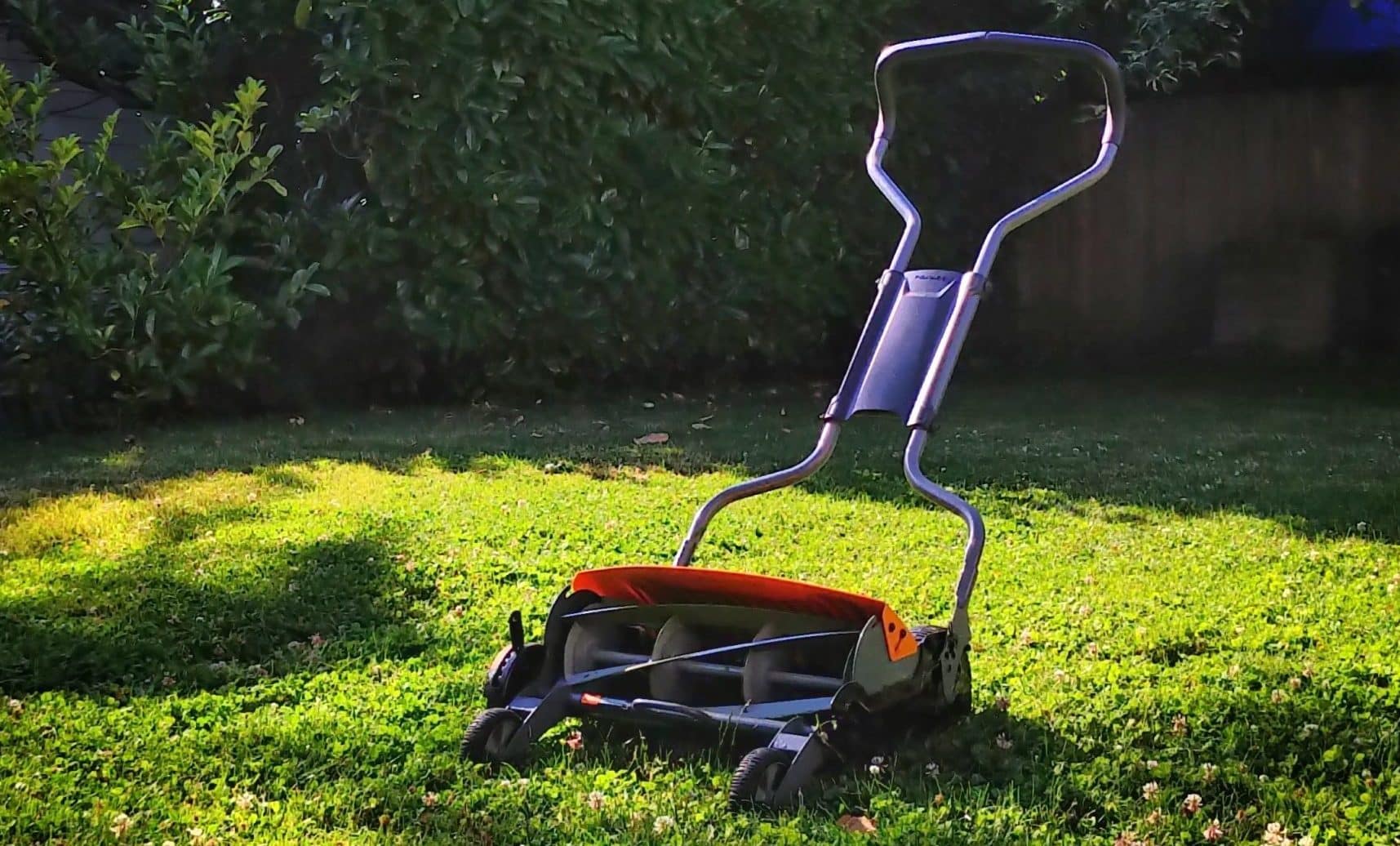
Dethatching vs Aeration: Drawing a Clear Line
Well, well, well, we’ve landed on the crux of the matter, the dethatching vs aeration debate. It’s arduous but necessary. So here’s the scoop: while both processes aim to transform your turf from drab to fab, they do so in different ways.
The by-product of dethatching is it will take out a decent chunk of the thatch layer, but it’s also going to pull out some healthy grass along with it. Aeration, however, is more discreet and sophisticated- loosening the soil without the risk of damaging your precious lawn.
Selecting between a core aerator and a dethatcher is a bit like choosing between Batman or Superman- both are superheroes in their own right, but their methods are diverse.
In the grand scheme of lawn care, dethatching, and aeration are complementary methods, working in tandem to create a lawn that looks like it’s straight out of a home decor magazine cover.
The science of lawn care ain’t rocket science, and the best part is that there’s always room for trial and, well, err…’ dirt’! So roll up your sleeves, get your hands dirty, and wage an educated war against thatches
Thatch Overload: How Much Is Too Much?
So you’ve got a thick layer of thatch, eh? An inch or half on your lawn is beneficial because it shelters beneficial microorganisms that break down organic matter, basically dead grass and debris, into essential nutrients required by your little green turf. But then you start passing the 1-inch-ish thickness; you’re heading into problem territory.
The topsoil becomes rock-solid, hampering water penetration. Now, what happens next is your lawn starts developing shallow roots as they start coiling up and growing closer to the surface, just where the water is. Instead of burrowing deeper into the soil for greater water access, they grow upwards. We enter shallow root syndrome territory. Toss in conditions like reduced tolerance to drought, increased risk of turf diseases, and depleted nutrient supply, all thanks to that thick thatch, and your lawn pulls a Houdini, departing faster than you can say “grub control.”
Signs Your Lawn Is Begging for Dethatching or Aeration
How do you know for sure that your lawn needs dethatching or aeration? Well, there are telltale signs your lawn is singing blues. If the ground feels springy, like a fresh marshmallow (spongy ain’t always good, you know), or if the grass feels thin and brittle, that’s your signal.
What’s more? If dry spots start to punctuate your once verdant carpet or, the invasion of unwanted pests becomes a common spectacle. More unsettling symptoms include changes in the aesthetic appeal of your lawn. If your lawn is losing its lush, healthy green color or becoming more sensitive to temperature extremes, sound the alarm.

Timing Is Everything: When to Dethatch and Aerate
Okay, so your lawn is screaming for help. Thatch and compaction need to be addressed ideally before aeration. Basically, clean up the mess first. This ensures better penetration of nutrients, air, and water into the root zone, reviving the lawn back to its lush self.
Best Time to Dethatch Your Lawn
Now, we move on to the timing issue. Depending on the variety of your grass and your location, the best time to dethatch is when your lawn is having its springtime growth spurt. Up in the northlands, this means late summer or early fall before the grass dons its winter blanket and calls it a day. If you’re down south, a late spring dethatching session works perfectly.
Frequency of Dethatching: How Often Is Ideal?
Alright, we’ve got your timing set. But how often should you dial the dethatching service?
If your lawn feels spongy and spotted with disease or rock-hard and patchy, this is the time to dethatch your lawn.
However, you know the age-old saying, “Prevention is better than cure?’ Go for the when the thatch on your soul is past an inch.
The Right Season for Lawn Aeration
Spotting shallow root growth is a strong indicator that your soil is compacted and screaming out for some good aerating. Do a small soil CSI using the “screwdriver test”. Push a screwdriver about 3 inches into moist soil easily, and you probably don’t have a compaction problem. We don’t want your lawn to be constipated now, do we?
How Frequently to Aerate Your Lawn for Optimal Results
Now, onto the frequency. If the soil at your place is sandy, then you’re in luck! You only need to aerate it once a year during springtime. And if your lawn is in heavy clay soil, then you have more work ahead – up to 2-3 aerating sessions a year. Doing this during fall gives those thatch plugs a chance to decompose during the winter, which means more nutrients for your grass come spring. Try aerating just before the lawn soil temperatures hit around 55 degrees Fahrenheit. Follow this up with a good weed pre-emergent, and you’ve got your lawn game going. And remember, a healthy, well-aerated lawn is a happy lawn – one that comes with fewer weeds, more worms, and a heck of a view.
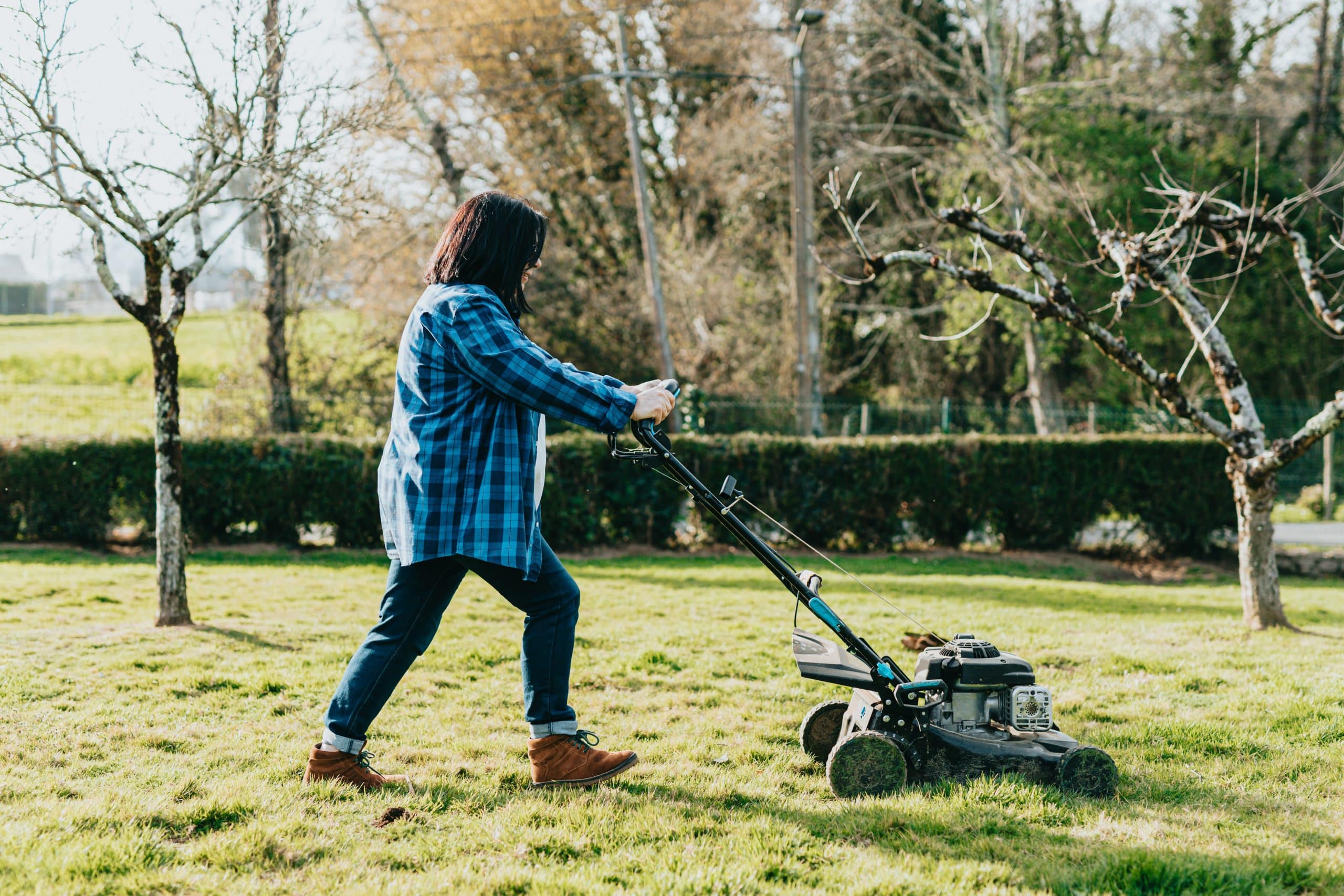
Lawn Care Dilemma: To Dethatch or Aerate First?
Dethatching should ideally be done before aeration.
Dethatching is like spring cleaning for your lawn. You want to clear out the dead stuff—the overgrowth, the rejects. This way, you’re preparing your lawn for optimal soil penetration during aeration; seems our main contenders actually team up for a greener result. Dethatching and Aeration, comrades in turfdom, working together for a flourishing and lush lawn.
Weighing the Benefits: Dethatching and Aeration
The benefits of dethatching are bountiful. For one, it opens up the gateway for your grass roots to access nutrients, water, and air.
The benefits of aeration are potent, improving the grass health and root growth more than you could imagine. Roots start grooving and moving into deeper parts of the soil. A well-aerated lawn has less erosion, it’s a fortress against onslaughts of disease and pests, and it outperforms in the drought and heat tolerance game.
The real deal is that both dethatching and aeration become lifesavers for your lawn in their own sweet ways. When dethatching improves soil health, aeration also cuts down on dethatching needs. While dethatching exposes lower grass shoots to more sunlight, aeration tames the lion called weeds. It’s teamwork, folks. The Batman and Robin of your lawn care regimen.
Dethatch or Aerate Before Overseeding?
So, what’s the plan – dethatch or aerate before overseeding?
Remember that crusty-looking layer preventing your grass from basking in sunlight and soaking up nutrients like a happy sunflower? Yep, we’re talking ‘thatch.’ Using a dethatcher before overseeding removes that obstruction so seeds can get cozy with the soil.
However, if you’ve got compacted soil, it’s all hands on deck! Compacted soil is hard and unyielding. It doesn’t let water seep through, which could lead to puddling or even grass suffocation. In such a case, aerating before overseeding helps break this tough facade, allowing water, air, and nutrients to penetrate deeper. Your seeds then have a more fertile playground to germinate and establish those deep, healthy roots.
Now, what about the timing? When should all this dethatching and aerating action take place? Well, if we’re talking about a perfect window, then spring or early summer is your bet. This primetime ensures your grass seeds have the best conditions to grow and prosper.
A final point to remember – do not – I repeat, do NOT forget to water your lawn properly after all that hard work. Also, topping off the area with some compost will help to fuel up those fresh seeds so they can grow.
Final Verdict: Aerator vs Dethatcher: Which Is Better for Lawn Health?
So, the dethatcher or the aerator? Seems like a cunning conundrum, huh? The truth is, it is not about which task is a heavyweight champ. It’s about which one’s scheduled to enter the ring. Dethatching and aerating are like a surgeon’s scalpel and a nurse’s comforting hand – each has its time and place, but boy, do they aid beautifully when used right.

I’m John, a “seasoned citizen” and an avid gardener. I live in Minnesota, where our weather and growing conditions can be harsh and challenging. Over the years, I have learned a thing or two about being successful in growing things. I have curated these tips, which I think are helpful for the beginning gardener and the seasoned experts. If you have feedback, let me know in the contact form.
Related posts:
